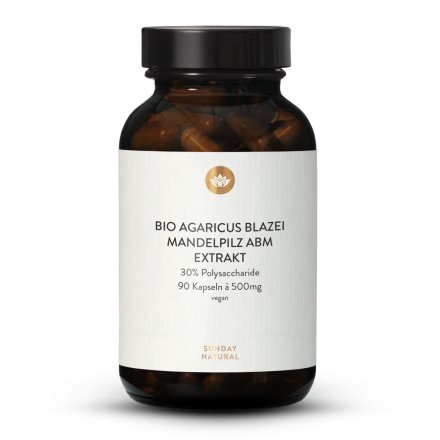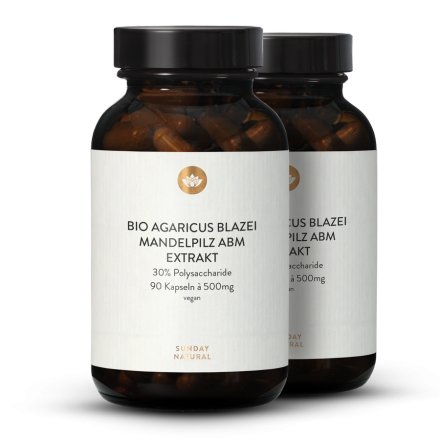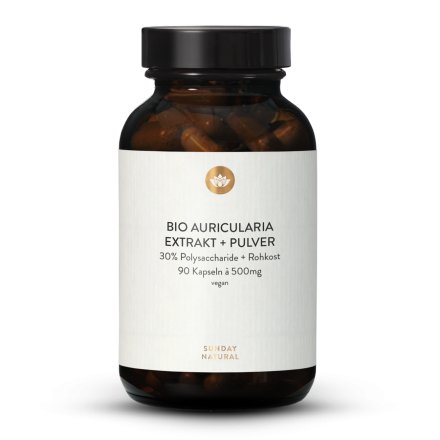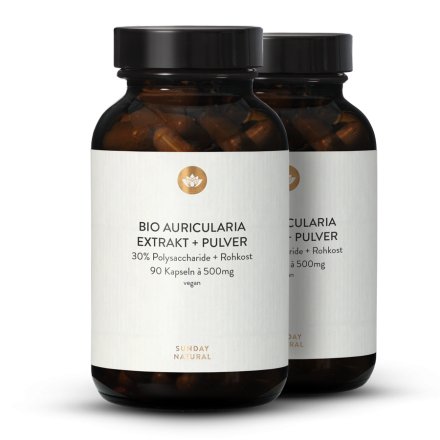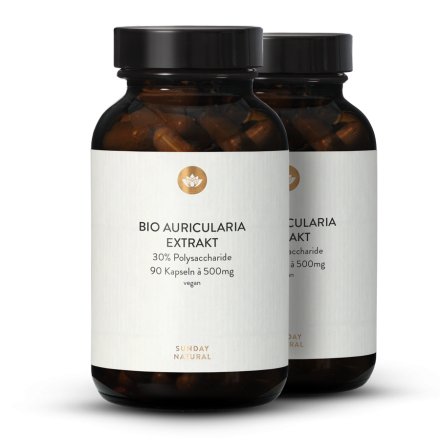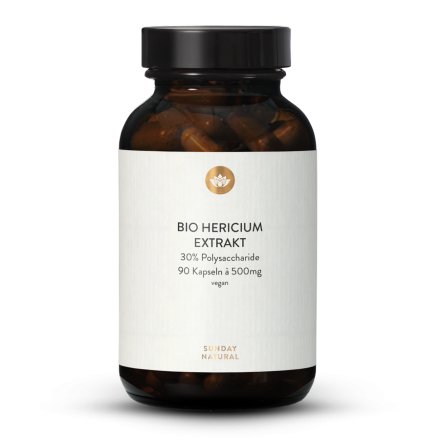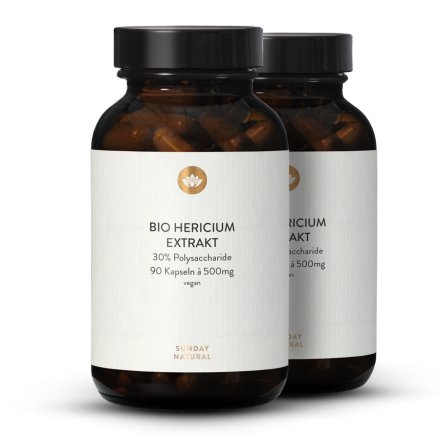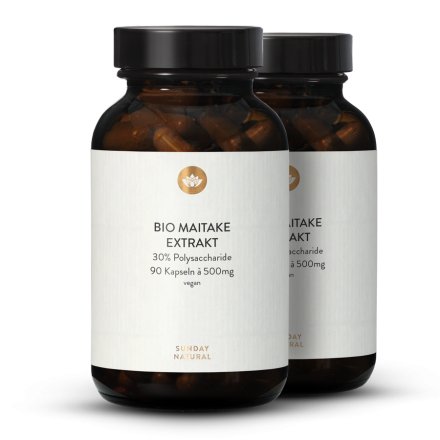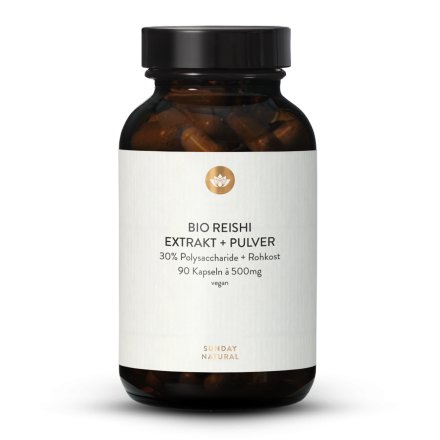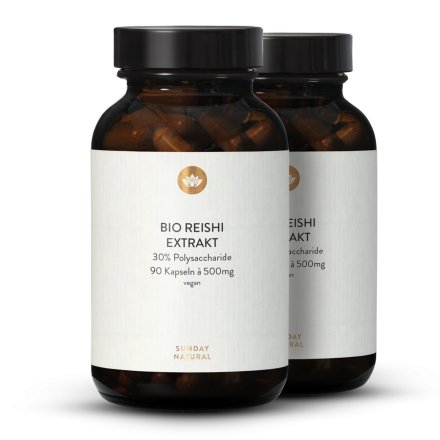- Home
- BIOACTIVES | MUSHROOMS
- Mushrooms
- Mushrooms
Mushrooms
Functional mushrooms are special edible mushrooms that have been valued for thousands of years for their special ingredients. In addition to their widespread use in Asia, they have also been known in Europe for centuries, for example from the famous discovery of the ice mummy Oetzi in South Tyrol (3200 BC), alongside whom functional mushrooms were found.
Agaricus blazei Murrill
Agaricus subrufescens, whose common names include Agaricus blazei, almond mushroom and mushroom of the sun, is a species of mushroom native to the Brazilian Amazon. Due to its alleged healing properties, the mushroom is known there as “Cogumelo de Deus,” or God's mushroom. Today, the majority of Agaricus subrufescens is cultivated in Asia. Scientific studies have revealed high concentrations of long-chain polysaccharides in this species, making it a promising addition to the range of edible functional mushrooms.
-
Raw & 30% Polysaccharides
Gutian County, Fujian
€16.9090 capsules
€303.96 / 1kg
-
Raw & 30% Polysaccharides
Gutian County, Fujian
€32.11 €33.802x90 capsules
€288.76 / 1kg
-
500mg, 30% Polysaccharides
Gutian County, Fujian
€19.9090 capsules
€357.91 / 1kg
-
500mg, 30% Polysaccharides
Gutian County, Fujian
€37.81 €39.802x90 capsules
€340.02 / 1kg
Organic Auricularia/Mu-Err
The mu-err mushroom (Auricularia polytricha, cloud ear) may be familiar to connoisseurs of Chinese cooking, as this "Chinese morel" is called for in many recipes. While the taste of this mushroom is not particularly distinct, it has a high nutritional value and a unique texture. Its use has been well documented in both Asia and Europe since the Middle Ages.
-
Raw & 30% Polysaccharides
laboratory tested
€14.9090 capsules
€267.99 / 1kg
-
bundle
laboratory tested
€28.31 €29.802x90 capsules
€254.59 / 1kg
-
500mg, 30% Polysaccharides
laboratory tested
€17.9090 capsules
€321.94 / 1kg
-
500mg, 30% Polysaccharides
laboratory tested
€34.01 €35.802x90 capsules
€305.85 / 1kg
Organic and Wildcrafted Chaga
Chaga (Inonotus obliquus, Fungus betulinus or clinker polypore) is considered one of the most important functional mushrooms in the Baltics, Russia, Siberia, China, Korea and Japan. This mushroom, which grows high off the ground in birch forests, thrives when exposed to both bitterly cold winters and hot summers. It is exceptionally rich in nutrients, and in the Baltics as well as across what is now known as Russia, the preparation of chaga as a tea has been documented for centuries.
-
-
Bundle
laboratory tested
€51.11 €53.802x90 capsules
€422.40 / 1kg
-
-
Bundle
laboratory tested
€37.81 €39.802x90 capsules
€340.02 / 1kg
Agaricus bisporus
Agaricus bisporus is the most widespread edible mushroom in the world and has a long cultural history. Not only is it very tasty, it also boasts a high concentration of vitamins and polysaccharides.
-
Raw, 30% Polysaccharides
Gutian County, Fujian
€12.9090 capsules
€232.01 / 1kg
-
-
500mg, 30% Polysaccharides
Gutian County, Fujian
€14.9090 capsules
€267.99 / 1kg
-
Shaggy Ink Cap
Coprinus comatus, also known as shaggy ink cap, cannot be stored as it quickly turns into black ink after ripening. However, when eaten fresh, its taste is comparable to asparagus. Although the mushroom is native to Europe, it has established itself in traditional Chinese medicine.
-
Raw, 30% Polysaccharides
Gutian County, Fujian
€12.9090 capsules
€232.01 / 1kg
-
Bundle
Gutian County, Fujian
€24.51 €25.802x90 capsules
€220.41 / 1kg
-
500mg, 30% Polysaccharides
Gutian County, Fujian
€14.9090 capsules
€267.99 / 1kg
-
Bundle
Gutian County, Fujian
€28.31 €29.802x90 capsules
€254.59 / 1kg
Organic Cordyceps
Cordyceps originally grew in the highlands of Tibet at elevations of over 3000m above sea level. The mushroom was discovered by yak herders, who noticed extraordinary vitality and resistance in the animals that ate it while grazing. Since then, for almost 1500 years, cordyceps has been used in traditional Chinese medicine for strengthening the body.
-
30% Polysaccharides, Raw
laboratory tested
€16.9090 capsules
€315.30 / 1kg
-
Bundle
laboratory tested
€32.11 €33.802x90 capsules
€302.93 / 1kg
-
500mg, 30% Polysaccharides
laboratory tested
€18.9090 capsules
€339.93 / 1kg
-
Bundle
laboratory tested
€35.91 €37.802x90 capsules
€322.93 / 1kg
Turkey Tail
Trametes versicolor, also known as turkey tail, grows on the trunks of dead deciduous trees. It helps to decompose the wood, contributing to the cycle of life by making the tree's nutrients available to the forest and its organisms once more. It was first mentioned in Chinese texts as early as about 200 BC.
-
Raw, 30% Polysaccharides
Gutian County, Fujian
€12.9090 capsules
€232.01 / 1kg
-
-
500mg, 30% Polysaccharides
Gutian County, Fujian
€14.9090 capsules
€267.99 / 1kg
-
Enoki
Flammulina velutipes, commonly known as enoki, is a common mushroom in the northern hemisphere which thrives at temperatures between 10°C and 12°C. Only frost stimulates the mushroom to form a fruiting body. In China, this edible mushroom has been cultivated for more than 1000 years -- its cultivation was first documented in the Tang dynasty around 800 AD.
-
Raw, 30% Polysaccharides
Gutian County, Fujian
€12.9090 capsules
€232.01 / 1kg
-
-
500mg, 30% Polysaccharides
Gutian County, Fujian
€14.9090 capsules
€267.99 / 1kg
-
Organic Hericium (Lion's Mane)
Lion's mane, also known as satyr's beard or bearded hedgehog mushroom, is considered a delicacy in Asia due to its subtle, sweet flavour. There is evidence to suggest that lion's mane was historically used as a functional mushroom not only in Asia, but also by indigenous peoples in North America.
-
Raw + 30% Polysaccharides
Gutian County, Fujian
€14.9090 capsules
€267.99 / 1kg
-
Bundle
Gutian County, Fujian
€28.31 €29.802x90 capsules
€254.59 / 1kg
-
30% Polysaccharides, 500mg
Gutian County, Fujian
€16.9090 capsules
€303.96 / 1kg
-
Bundle
Gutian County, Fujian
€32.11 €33.802x90 capsules
€288.76 / 1kg
Organic Maitake
A delicacy in Chinese and Japanese cuisine for millennia, maitake mushrooms are prized for their earthy flavour. Ancient texts indicate that maitake has been used as a functional mushroom in traditional Chinese medicine for over 2000 years.
-
30% Polysaccharides, Raw
laboratory tested
€14.9090 capsules
€267.99 / 1kg
-
Bundle
laboratory tested
€28.31 €29.802x90 capsules
€254.59 / 1kg
-
30% Polysaccharides, 500mg
Gutian County, Fujian
€16.9090 capsules
€303.96 / 1kg
-
30% Polysaccharides, 500mg
Gutian County, Fujian
€32.11 €33.802x90 capsules
€288.76 / 1kg
Organic Pleurotus (Oyster Mushroom)
The oyster mushroom has been mentioned in European books on herbalism from as early as the 16th century and has been cultivated in Europe for over 100 years. One of the most important compounds within the oyster mushroom is pleuran (β-(1,3/1,6)-D-glucan), a polysaccharide with health benefits which are currently the focus of much research. Alongside Agaricus bisporus and shiitake, oyster mushrooms are one of the most commonly cultivated mushrooms in the world.
-
30% Polysaccharides, Raw
laboratory tested
€14.9090 capsules
€267.99 / 1kg
-
30% Polysaccharides, Raw
laboratory tested
€28.31 €29.802x90 capsules
€254.59 / 1kg
-
500mg, 30% Polysaccharides.
Gutian County, Fujian
€16.9090 capsules
€303.96 / 1kg
-
Bundle
Gutian County, Fujian
€32.11 €33.802x90 capsules
€288.76 / 1kg
Organic Polyporus
Polyporus umbellatus is a rare and cherished culinary mushroom. The most nutritious components of the mushroom are contained in the sclerotium, a special form of mycelium that can survive frost and drought.
-
30% Polysaccharides, Raw
laboratory tested
€19.9090 capsules
€357.91 / 1kg
-
30% Polysaccharides, Raw
laboratory tested
€37.81 €39.802x90 capsules
€340.02 / 1kg
-
500mg, 30% Polysaccharides
laboratory tested
€24.9090 capsules
€447.84 / 1kg
-
500mg, 30% Polysaccharides
laboratory tested
€47.31 €49.802x90 capsules
€425.45 / 1kg
Poria Cocos
Poria cocos, also known as pine sponge, is also referred to as Indian bread or coconut fungus due to its appearance. It thrives in the heartwood of pine trees, where it grows underground like a potato or truffle. As the fruiting body cannot yet be industrially cultivated, the mycelium of the mushroom cultivated on a millet substrate is used. Due to its high nutrient density, it used to be an emergency food for the indigenous people to protect themselves from starvation.
Organic Reishi
Reishi (Ganoderma lucidum), or lingzhi in China, meaning mushroom of immortality, has been used as a functional mushroom in China for thousands of years.
-
30% Polysaccharides, Raw
laboratory tested
€16.9090 capsules
€303.96 / 1kg
-
Bundle
laboratory tested
€32.11 €33.802x90 capsules
€288.76 / 1kg
-
500mg, 30% Polysaccharides
laboratory tested
€19.5090 capsules
€350.72 / 1kg
-
Organic Shiitake
Shiitake (Lentinula edodes) is, alongside reishi, considered to be one of the most important functional mushrooms and is revered by mushroom connoisseurs for its taste in cuisine. Shiitake has been treasured in China for millennia due to its nutritional value.
-
Raw + 30% Polysaccharides
laboratory tested
€14.9090 capsules
€267.99 / 1kg
-
Bundle
laboratory tested
€28.31 €29.802x90 capsules
€254.59 / 1kg
-
500mg, 30% Polysaccharides
laboratory tested
€16.9090 capsules
€303.96 / 1kg
-
500mg, 30% Polysaccharides
laboratory tested
€32.11 €33.802x90 capsules
€288.76 / 1kg
Organic Tremella (Snow Fungus)
Also known as snow fungus or white jelly mushroom, the tremella is one of the most popular mushrooms in Chinese cuisine and medicine. The tremella mushroom is known on the one hand for its culinary uses in Chinese and Taiwanese food, and on the other hand for its cosmetic uses as an ingredient in anti-ageing and beauty products.
-
Raw & 30% Polysaccharides
Gutian County, Fujian
€14.9090 capsules
€267.99 / 1kg
-
Raw & 30% Polysaccharides
Gutian County, Fujian
€28.31 €29.802x90 capsules
€254.59 / 1kg
-
500mg, 30% Polysaccharides
Gutian County, Fujian
€16.9090 capsules
€303.96 / 1kg
-
500mg, 30% Polysaccharides
Gutian County, Fujian
€32.11 €33.802x90 capsules
€288.76 / 1kg
Tinder Conk
Oetzi, the Iceman, was found in the Oetztal Alps in 1991 carrying tinder conk (Fomes fomentarius). Though he lived about 5000 years ago, this finding indicates that the tough, woody fruiting body of this mushroom is particularly resistant. It was also used by Hippocrates of Kos (circa 370 BC).
-
Raw, 30% Polysaccharides
Gutian County, Fujian
€14.9090 capsules
€267.99 / 1kg
-
-
30% Polysaccharides, 500mg
Gutian County, Fujian
€18.9090 capsules
€339.93 / 1kg
-





